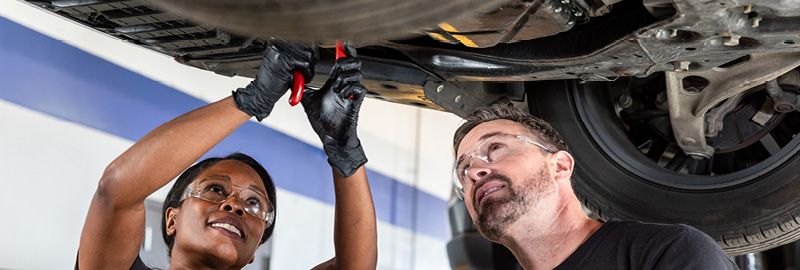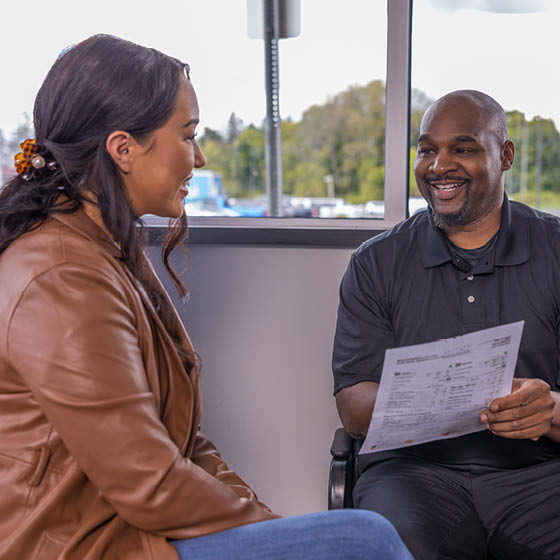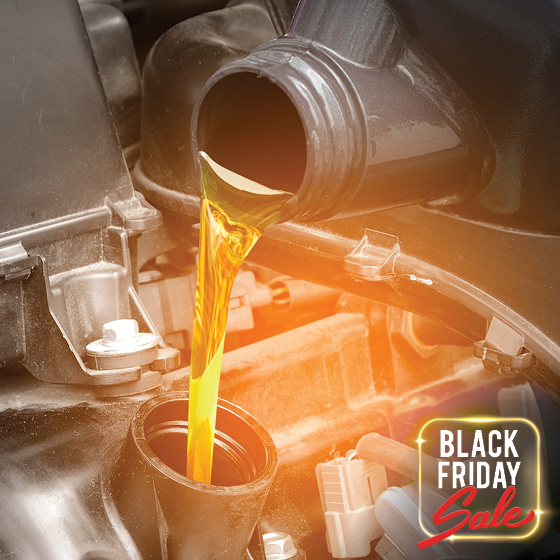
Key Areas to Check Before Winter:
Battery
Many people associate battery failure with winter or cold temperatures, but it is the hot summer months that degrade the battery, the failure may not occur until those temperatures drop. You can assess a battery for degradation long before it fails. With today’s technology, a Technician can connect a piece of equipment that will verify the battery state of charge, the ability to draw the proper amperage to simulate starting the vehicle and other tests that give the Technician the proper information to recommend a battery if required. When it comes to purchasing a battery, Monro is here to help you choose the best battery for your application.
Tires
Tires are another part that you can inspect and service before those cold days hit. Having the tire pressure corrected is important since a tire will drop one degree of pressure for every ten degrees of temperature. You may notice your TMPS light illuminating when you have a drop in temperature, this indicator is to inform you of the low tire pressure and will reset when the proper pressure is reached. Some vehicles require the vehicle to be driven to reset; see the owner’s manual for the proper reset procedure for your vehicle. In addition to tire pressure, it is important to have good tread depth so you can maintain proper traction in snowy or icy conditions. For maximum winter performance, you may want to consider a Winter tire. Winter tires are more than just snow tires. Winter tires are designed to give you better traction with colder temperatures. An all-season tire is designed to operate in the winter too, but the rubber does become harder as the temperature declines. A winter tire will remain softer than an all-season tire, resulting in better traction.
Braking System
Your braking system is a critical component during all seasons but ensuring the brakes are in good working order for the winter months is always a great area to inspect and keep in optimal condition. Brake fluid is hydroscopic which means that it absorbs moisture over time. Moisture in the brake system could start to corrode and degrade components like the brake lines. Our Technician can test for moisture in the fluid in a variety of ways. If excessive moisture is detected, a brake fluid exchange will provide the system with new brake fluid. In addition to testing the brake fluid, the Technician will inspect critical components like the brake pads, brake rotors and calipers to make certain that everything is moving, and the braking system is operating as it should without squeaks or squeals.
Belts and Hoses
Your vehicle’s cooling system plays a key role throughout the year. In the hot summer months, the cooling system keeps the vehicle’s temperature in a normal operating range. In the winter months, the warm coolant that has been circulating through the engine creates the heat that keeps us warm while driving the vehicle. Ensuring you have the proper coolant level is critical. In addition to the coolant level there are a few components that should be inspected like the water pump to ensure they are not leaking and working properly. There is a series of coolant hoses that are responsible for moving the engine coolant to the passenger compartment to keep us warm and to move the hot coolant to the radiator so it can be cooled so the vehicle does not overheat. These hoses are typically made of rubber and can show signs of wear, cracks or other conditions that could lead to a failure.
Every gasoline or diesel-powered vehicle has a drive belt. The drive belt spins the alternator giving us the power to run the lights and accessories. The drive belt also drives the power steering pump and AC compressor. If the belt breaks or is slipping it could affect the system significantly, and although you may not think the AC compressor is important in the winter, it does pay a significant role in your defroster which is important in keeping your windshield clean and clear.
Why is a proper inspection critical?
A proper inspection can detect these issues before they fail, and our Monro Technicians have the proper training to detect the variety of conditions that affect the belts and hoses.
Many of the items mentioned do not appear overly complicated but access and other factors may lead you to wanting the work done by a professional. We offer a courtesy inspection program called our ConfiDrive Performance Review, where our trained Technicians will perform and inspect these critical systems so you can have a worry-free winter. Doing inspections yourself is always beneficial but with today’s complex vehicle, it may be difficult for someone to do in their garage or driveway. For example, for many years, it was a common practice to inspect your driving belts by observing if there are cracks present. With today’s rubber technology, the rubber no longer cracks but rather wears like a tire. To thoroughly inspect a belt today, you need a tool that you can use to measure the wear of the belt.
Another example where it might be better to have a Technician perform the service is your coolant system. Yes, it might be easy to see if the fluid requires a top off, but coolant has a freezing point and should be tested to ensure the coolant will not freeze throughout the winter. Also, there are a variety of coolants used today, using the correct type for your vehicle is critical.
In addition to the specialty tool, another advantage of a professional performing the inspection is their ability to identify trends in certain makes and models. Because they inspect and service vehicles every day, they have a better understanding of potential issues that may not be obvious to the everyday motorist. Since they have this knowledge, when you bring your vehicle in, they may check certain things because of a higher probability of failure.
However, there are items in your Winter vehicle preparation that are simple and can be handled by anyone. It is always handy to have a good complete Emergency Kit. This kit should include items like blankets, a flashlight and some first aid supplies. In addition to the Emergency kit, it is always good to keep a candle and matches in your vehicle. Obviously, never have a lit candle while operating a moving vehicle. It is also important to keep an ice scraper in the vehicle. This is a simple but important investment for anyone who lives where there is frost.
Lastly, it is important to have good working wiper blades. The Motorist Assurance Program recommends replacing windshield wipers every 6 months. New wiper blades will keep your windshield clear and provide the best visibility.




